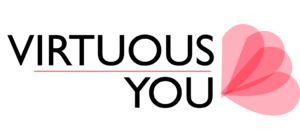Hey there. Welcome to epidsode two of the Journey to Fans podcast. Today we’re going to talk about the five stages of the customer journey and how a stranger actually becomes a fan.
Knowing these stages could be the difference between a one-time transaction and getting paid on repeat.

Design a Customer Journey that Attracts Dream Clients
So, I’ve already talked about the fact that many entrepreneurs put a lot of weight on a sales funnel just until it does what it’s designed to do, make sales. If you want to hear more about why this isn’t a good idea, check out this blog post for more information.
Personally, I’ve been a customer without a journey and been a part of many sales funnels. And my mistake cost me almost $10,000 because of it. I know that when you start a business, generally speaking, the business makes a loss because you’re buying equipment, you’re learning, you’re connecting with people to share how you serve clients. But to lose $10,000 was just unacceptable.

There’s still so much work to be done when it comes to designing a customer journey and knowing where your client is on that journey is going to help you do three things.
First, you’ll be able to speak to them in a language that they understand because you’ll be answering their most pressing questions in that journey. Second, because you understand your clients pressing questions, you know exactly what product to share with them. Third, because you’re using products to solve their problems at each stage of the journey, you’re also going to be earning their trust in you as the best solution to their transformation.
Knowing where your client is on their journey could also be the difference between a love ’em and leave ’em transaction and a lasting relationship that benefits both you and your customer for the long haul.
Focus on Solving Problems, Not Just Making Sales
Your customer is going to start getting closer and closer to their dream while working with you, and you’re going to continue to get paid for your status as their thought leader.
So incidentally, you’re leaving money on the table if you don’t know what point your client is in their customer journey.
If you were to choose between one payment, one time for your signature offer and multiple payments for multiple offers or client referrals from one encounter, it’s a no brainer. Why get paid just once if you can keep getting paid over and over again for working with somebody you already love?
We hear the term sales funnel and it immediately intimidates us. We don’t know what it is, how to build one.
Facilitating transformation for a person with a problem cannot be reduced to something so simplistic. Now, don’t get me wrong, a customer journey is not complicated. However, where a sales funnel puts sales at the center, a customer journey puts the problem at the center. It reminds you that the reason you are in business is not just to make sales, it’s to actually solve problems.
The 5 Stages of the Customer Journey
That said, let’s go over the five stages of the customer journey. Now get your pens and paper out. And if you want, you can actually draw out this journey yourself first.

Stranger
Everyone starts off as a stranger. Maybe they came across you through a podcast interview, a hashtag, or even through a Facebook ad. They decide whether or not they’re going to stick around and learn from you, who they consider a stranger as well.
Audience
These are the people that have chosen to join your social media and or email list at this stage of their customer journey.
Think about an open air market, how you’re able to go from vendor to vendor and window shop their products. You ask them questions about it, put it back down, move on to another vendor. You’re not really committed at this point. You’re just really excited to be in the open air market to begin with. That’s how they feel about you. They consider you a vendor and they’re not as committed to buying your thing yet, but they are still interested in learning a little bit more about you and what you do.

Prospect
After they’ve been in your audience for a while, they may decide that they want to be a prospect. They’re really considering you as an option to solve their problem.
Here, they’re listening to everything that you’re saying. They are reading every Instagram post. They are reading every word and every email. They are looking over your sales page with a fine-tooth comb. They are asking really good questions because they’re genuinely interested and they’re trying to figure out whether you’re the person that they’re going to commit to working with to solve whatever problem that leads them to you.
Customer
Once you’ve converted your prospect, they become your customer. You’ve successfully overcome their objections. They’ve invested in your product. They selected you as their solution. At this point, yes, you can celebrate the sales notifications, but there’s so much more to it. Now you actually have to partner with them to solve their problem. This is where the work begins.
The other thing that I hate about sales funnels is they give you this false sense that the work is done as soon as the sale is made.
But the truth of the matter is, the work is just starting. Because the person who came to your doorstep and said, “hey, I have a problem,” still has that problem. And so they’re looking to you for support and your product to get them to transformation. Now, you have to turn around and invest in them and deliver on what you promised.

Ambassador
The final stage is called the Ambassador Stage. At the ambassador stage, your customers are on the other side of transformation. They’re now raving fans of your business and they consider you a thought leader.
How to Use Your Customer Journey to Make Better Business Decisions
The primary way knowing all stages of the customer journey can help you is to assess the results you’re getting in your business and make better decisions. Knowing all of the questions that your potential clients are asking as they move down the customer journey and what they are asking as they make their way to transformation is going to help you make better decisions. It’s going to help you understand where you need to make more investment. It’s going to help you optimize your product.
If you’re working on filling your prospect pool, you can look at your interaction with your audience and how well they’re responding to your content, and how frequently they’re accepting your invitation to become a prospect.
You can also look upstream to see how many people are actually opting into your webinar or whatever conversion experience you have created.
How many people are asking the right questions? How many people are in your audience coming into your DMs and asking specifically about the work that you do or sharing their struggles with the problem that you solve?
If you’re not getting enough prospects, you have to look upstream to see whether you’re attracting the right audience.
If you’re working on conversions, you can tell how well you’re overcoming objections and what processes you have in place to get your prospects to an easy yes.
Now that you know the full customer journey, you also know that the sale is far from the finish line.
Knowing what your customers need from you and how you can facilitate their transformation, will transition them from Customer to Fan status, which is by far the most important role in your customer journey. Because when they become a Fan, you have the opportunity again to reconstruct a new journey or partner with them to invite more dream clients that are like them into the journey you already have.
